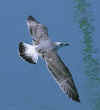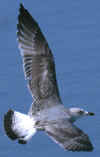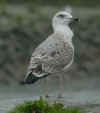 Yellow-legged
Gull- Geelpootmeeuw (L. michahellis): 2cy August
Yellow-legged
Gull- Geelpootmeeuw (L. michahellis): 2cy August
(last update: 08 december 2003)
YLG
1cy May
YLG
1cy June
YLG
1cy July
YLG 1cy August
YLG 1cy September
YLG 1cy October
YLG 1cy November
YLG 1cy December
YLG
2cy January
YLG 2cy February
YLG 2cy March
YLG 2cy April
YLG 2cy May
YLG 2cy June
YLG 2cy July
YLG 2cy August
YLG 2cy September
YLG 2cy October
YLG 2cy November
YLG 2cy December
YLG
3cy January
YLG 3cy February
YLG 3cy March
YLG 3cy April
YLG 3cy May
YLG 3cy June
YLG 3cy July
YLG 3cy August
YLG 3cy September
YLG 3cy October
YLG 3cy November
YLG 3cy December
YLG
sub-ad Jan.
YLG sub-ad Feb.
YLG sub-ad March
YLG sub-ad April
YLG sub-ad May
YLG sub-ad June
YLG sub-ad July
YLG sub-ad Aug.
YLG sub-ad Sept.
YLG sub-ad Oct.
YLG sub-ad Nov.
YLG sub-ad Dec.
YLG
adult January
YLG adult February
YLG adult March
YLG adult April
YLG adult May
YLG adult June
YLG adult July
YLG adult August
YLG adult September
YLG adult October
YLG adult November
YLG adult December
|
General description: By August, the primary moult is in its last stage, with all juvenile primaries dropped and new second generation primaries up to P8. Most birds have the greater, median and lower lesser coverts moulted in the complete moult last months, with moult still going on in the (outer) lesser coverts. In the mean time, the partial autumn moult starts this month, with 2cy michahellis dropping again some of the outer median coverts and the upper tertials. The final extend of this partial autumn moult in 2cy birds can be seen in the October section. Moult stage and pace of remiges and rectrices: We have limited surveys on primary moult stage of 2cy michahellis from the end of the month. The figures can be viewed in the table below. We described 82 2cy birds in detail on two occasions at Etaples, Calais region. By the end of July, the average primary
moult score is P6 fully grown by 28th July. The most
advanced birds by late July show an obvious short wing, with P10 dropped
and P7 already fully grown. One bird has P8 fully grown. The low SD values
(standard deviation) in the July
tables imply a small range of variation. Compared to argenteus, these michahellis figures show that the differences in average PMS are very limited and the individual variation result in large overlap. The majority of 2cy michahellis have started the moult in the rectrices and the secondaries by July. By the end of August, moult in the secondaries is almost finished, with a gap in the inner half of the secondary row. At first, the secondaries are moulted in descending order, from the outermost secondaries inwards, towards the body. When these outermost secondaries are fully grown, another moult wave starts from the tertials outwards, in ascending order. The stage of secondary moult is nicely illustrated by image 15 to 18. The tail-feathers are moulted centrifugally. As can be seen in the same images, all the rectrices have been replaced and in some individuals, the outermost rectrices R6 are still growing by the last week of August. Moult stage and pace of wing-coverts: The complete moult in the wing-coverts may start by late April, with the majority of 2cy michahellis moulting median wing-coverts by early May. During the summer months, the median and lower lesser coverts are replaced, the tertials are replaced from the upper tertials downwards, new greater coverts grow in in two waves: from the outermost feathers inwards and from the inner greater coverts outwards. The two waves meet at about coverts #7 and #8. The lesser coverts are replaced last, finishing with the feathers in the carpal edge and the upper rows of lesser coverts. It's late August then and the complete moult in the wing-coverts and tertials is at its end. In the mean time, 2cy michahellis start moulting inner median coverts and the upper tertials for another cycle: the partial moult in autumn is initiated. This partial moult may overlap with the replacement of the last lesser coverts, by late August. As can be expected, birds include the most vulnerable and oldest wing-coverts first in this partial moult, so this partial moult normally starts with the outermost and inner median coverts, the inner greater coverts and the upper tertials. This is nicely demonstrated by several images in this August section: image 1 shows a bird with missing outer medians and new tertials, image 11 shows a bird with missing upper tertials and outer medians and image 13 shows a bird with fresh inner greater coverts. These are all illustrative for individuals in which complete moult overlaps with partial moult. The complete moult will be finish by the time the last outer primary P10 is fully grown. See Gull Topography for explanations of feather tracts. The box below enlarges upon the partial moult in autumn in 2cy michahellis.
Moult stage and pace of scapulars: Moult to third generation
scapulars may start as early as mid-January in 2cy michahellis. By
June, all present birds show active moult in the scapulars, with largest
numbers for the class 75%-99% third generation scapulars (n = 24). By the
end of July, this moult in the scapulars is completed, with fresh feathers
in the lowest scapular row. Tables:
|
 michahellis
Sempach
884278 2cy August 25 2000, Boulogne/Mer, France. michahellis
Sempach
884278 2cy August 25 2000, Boulogne/Mer, France.Ringed in Switzerland. |
||||||||||||||||||||||||||||||||||||||||||||||||||||||||||||||||||||||||||||||||||||||||||||||||||||||||||||||||||||||||||||||||||||||||||||||||
 michahellis
GO.41 2cy August 2010, Malaga, Spain. michahellis
GO.41 2cy August 2010, Malaga, Spain.Ringed in Malaga. Picture: G. Martin. |
|||||||||||||||||||||||||||||||||||||||||||||||||||||||||||||||||||||||||||||||||||||||||||||||||||||||||||||||||||||||||||||||||||||||||||||||||
 michahellis
PDYZ 2cy August 2009, Tarragona, Spain. michahellis
PDYZ 2cy August 2009, Tarragona, Spain.Ringed in Ebro Delta. Picture: C. Gibbins. |
|||||||||||||||||||||||||||||||||||||||||||||||||||||||||||||||||||||||||||||||||||||||||||||||||||||||||||||||||||||||||||||||||||||||||||||||||
 michahellis
171Z
2cy August 08-11 2003, Etaples, France. michahellis
171Z
2cy August 08-11 2003, Etaples, France.Ringed in S France. |
|||||||||||||||||||||||||||||||||||||||||||||||||||||||||||||||||||||||||||||||||||||||||||||||||||||||||||||||||||||||||||||||||||||||||||||||||
 photo
7411: michahellis 2cy August 10 2003, Etaples, France. photo
7411: michahellis 2cy August 10 2003, Etaples, France.P8 fully grown and no old primaries left. |
|||||||||||||||||||||||||||||||||||||||||||||||||||||||||||||||||||||||||||||||||||||||||||||||||||||||||||||||||||||||||||||||||||||||||||||||||
 photo
7211: michahellis 2cy
August 08 2003, Boulogne/Mer, France. photo
7211: michahellis 2cy
August 08 2003, Boulogne/Mer, France.P7 fully grown, no old primaries left. |
|||||||||||||||||||||||||||||||||||||||||||||||||||||||||||||||||||||||||||||||||||||||||||||||||||||||||||||||||||||||||||||||||||||||||||||||||
 photo
7567: michahellis 2cy
August 10 2003, Etaples, France. photo
7567: michahellis 2cy
August 10 2003, Etaples, France.P8 fully grown. |
|||||||||||||||||||||||||||||||||||||||||||||||||||||||||||||||||||||||||||||||||||||||||||||||||||||||||||||||||||||||||||||||||||||||||||||||||
 photo
7404: michahellis 2cy
August 10 2003, Etaples, France. photo
7404: michahellis 2cy
August 10 2003, Etaples, France.Barred individual (second generation-like wing-coverts and scapulars. |
|||||||||||||||||||||||||||||||||||||||||||||||||||||||||||||||||||||||||||||||||||||||||||||||||||||||||||||||||||||||||||||||||||||||||||||||||
 photo
7566: michahellis 2cy
August 08-11 2003, Etaples, France. photo
7566: michahellis 2cy
August 08-11 2003, Etaples, France.Two birds: one grey and one barred scapulars. |
|||||||||||||||||||||||||||||||||||||||||||||||||||||||||||||||||||||||||||||||||||||||||||||||||||||||||||||||||||||||||||||||||||||||||||||||||
 photo
7370: michahellis 2cy
August 10 2003, Etaples, France. photo
7370: michahellis 2cy
August 10 2003, Etaples, France.Wing-raising 2cy: P8 fully grown and secondaries still missing. |
|||||||||||||||||||||||||||||||||||||||||||||||||||||||||||||||||||||||||||||||||||||||||||||||||||||||||||||||||||||||||||||||||||||||||||||||||
 photo
7381: michahellis 2cy
August 10 2003, Etaples, France. photo
7381: michahellis 2cy
August 10 2003, Etaples, France.P7 fully grown and innermost secondary still juvenile. |
|||||||||||||||||||||||||||||||||||||||||||||||||||||||||||||||||||||||||||||||||||||||||||||||||||||||||||||||||||||||||||||||||||||||||||||||||
 photo
7340: michahellis 2cy
August 09 2003, Etaples, France. photo
7340: michahellis 2cy
August 09 2003, Etaples, France.P7 fully grown and innermost secondaries still juvenile. |
|||||||||||||||||||||||||||||||||||||||||||||||||||||||||||||||||||||||||||||||||||||||||||||||||||||||||||||||||||||||||||||||||||||||||||||||||
 photo
7328: michahellis 2cy
August 09 2003, Etaples, France. photo
7328: michahellis 2cy
August 09 2003, Etaples, France. |
|||||||||||||||||||||||||||||||||||||||||||||||||||||||||||||||||||||||||||||||||||||||||||||||||||||||||||||||||||||||||||||||||||||||||||||||||
 Photo
1: Yellow-legged
Gull 2cy August 25 2000, Boulogne/Mer, France. Photo
1: Yellow-legged
Gull 2cy August 25 2000, Boulogne/Mer, France. |
|||||||||||||||||||||||||||||||||||||||||||||||||||||||||||||||||||||||||||||||||||||||||||||||||||||||||||||||||||||||||||||||||||||||||||||||||
 Photo
2: Yellow-legged
Gull 2cy August 25 2000, Etaples, France. With an adult michahellis
in the background. Photo
2: Yellow-legged
Gull 2cy August 25 2000, Etaples, France. With an adult michahellis
in the background. |
|||||||||||||||||||||||||||||||||||||||||||||||||||||||||||||||||||||||||||||||||||||||||||||||||||||||||||||||||||||||||||||||||||||||||||||||||
 Photo
5: Yellow-legged
Gull 2cy August 25 2000, Boulogne/Mer, France. Photo
5: Yellow-legged
Gull 2cy August 25 2000, Boulogne/Mer, France. |
|||||||||||||||||||||||||||||||||||||||||||||||||||||||||||||||||||||||||||||||||||||||||||||||||||||||||||||||||||||||||||||||||||||||||||||||||
 Photo
7: Yellow-legged
Gull 2cy August 25 2000, Etaples, France. Photo
7: Yellow-legged
Gull 2cy August 25 2000, Etaples, France. |
|||||||||||||||||||||||||||||||||||||||||||||||||||||||||||||||||||||||||||||||||||||||||||||||||||||||||||||||||||||||||||||||||||||||||||||||||
 Photo
8: Yellow-legged
Gull 2cy August 25 2000, Etaples, France. Photo
8: Yellow-legged
Gull 2cy August 25 2000, Etaples, France.Delayed moult stage. |
|||||||||||||||||||||||||||||||||||||||||||||||||||||||||||||||||||||||||||||||||||||||||||||||||||||||||||||||||||||||||||||||||||||||||||||||||
 Photo
9: Yellow-legged
Gull 2cy August 25 2000, Etaples, France. Photo
9: Yellow-legged
Gull 2cy August 25 2000, Etaples, France. |
|||||||||||||||||||||||||||||||||||||||||||||||||||||||||||||||||||||||||||||||||||||||||||||||||||||||||||||||||||||||||||||||||||||||||||||||||
 Photo
10: Yellow-legged
Gull 2cy August 25 2000, Boulogne/Mer, France. Photo
10: Yellow-legged
Gull 2cy August 25 2000, Boulogne/Mer, France. |
|||||||||||||||||||||||||||||||||||||||||||||||||||||||||||||||||||||||||||||||||||||||||||||||||||||||||||||||||||||||||||||||||||||||||||||||||
 Photo
11: Yellow-legged
Gull 2cy August 25 2000, Boulogne/Mer, France. Photo
11: Yellow-legged
Gull 2cy August 25 2000, Boulogne/Mer, France. |
|||||||||||||||||||||||||||||||||||||||||||||||||||||||||||||||||||||||||||||||||||||||||||||||||||||||||||||||||||||||||||||||||||||||||||||||||
 Photo
12: Yellow-legged
Gull 2cy August 25 2000, Boulogne/Mer, France. Photo
12: Yellow-legged
Gull 2cy August 25 2000, Boulogne/Mer, France. |
|||||||||||||||||||||||||||||||||||||||||||||||||||||||||||||||||||||||||||||||||||||||||||||||||||||||||||||||||||||||||||||||||||||||||||||||||
 Photo
13: Yellow-legged
Gull 2cy August 25 2000, Boulogne/Mer, France. Photo
13: Yellow-legged
Gull 2cy August 25 2000, Boulogne/Mer, France. |
|||||||||||||||||||||||||||||||||||||||||||||||||||||||||||||||||||||||||||||||||||||||||||||||||||||||||||||||||||||||||||||||||||||||||||||||||
| michahellis remiges & rectrices. | |||||||||||||||||||||||||||||||||||||||||||||||||||||||||||||||||||||||||||||||||||||||||||||||||||||||||||||||||||||||||||||||||||||||||||||||||
 Photo
15: Yellow-legged
Gull 2cy August 25 2000, Etaples, France. Photo
15: Yellow-legged
Gull 2cy August 25 2000, Etaples, France. |
|||||||||||||||||||||||||||||||||||||||||||||||||||||||||||||||||||||||||||||||||||||||||||||||||||||||||||||||||||||||||||||||||||||||||||||||||
 Photo
16: Yellow-legged
Gull 2cy August 25 2000, Etaples, France. Photo
16: Yellow-legged
Gull 2cy August 25 2000, Etaples, France. |
|||||||||||||||||||||||||||||||||||||||||||||||||||||||||||||||||||||||||||||||||||||||||||||||||||||||||||||||||||||||||||||||||||||||||||||||||
 Photo
17: Yellow-legged
Gull 2cy August 25 2000, Etaples, France. Photo
17: Yellow-legged
Gull 2cy August 25 2000, Etaples, France. |
|||||||||||||||||||||||||||||||||||||||||||||||||||||||||||||||||||||||||||||||||||||||||||||||||||||||||||||||||||||||||||||||||||||||||||||||||
 Photo
18: Yellow-legged
Gull 2cy August 25 2000, Etaples, France. Photo
18: Yellow-legged
Gull 2cy August 25 2000, Etaples, France. |
|||||||||||||||||||||||||||||||||||||||||||||||||||||||||||||||||||||||||||||||||||||||||||||||||||||||||||||||||||||||||||||||||||||||||||||||||
| Herring Gull to compare. | |||||||||||||||||||||||||||||||||||||||||||||||||||||||||||||||||||||||||||||||||||||||||||||||||||||||||||||||||||||||||||||||||||||||||||||||||
 Photo
20: Herring Gull 2cy August 25 2000, Boulogne/Mer, France. Have
a look at the 2cy Herring Gull
section. Photo
20: Herring Gull 2cy August 25 2000, Boulogne/Mer, France. Have
a look at the 2cy Herring Gull
section. |
|||||||||||||||||||||||||||||||||||||||||||||||||||||||||||||||||||||||||||||||||||||||||||||||||||||||||||||||||||||||||||||||||||||||||||||||||

